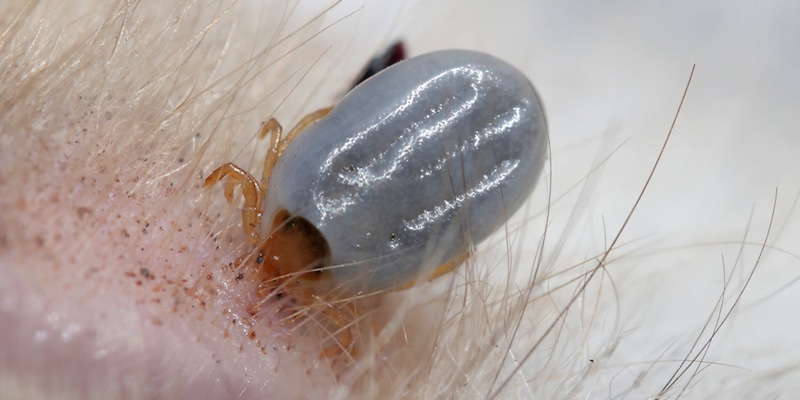Spring is here! With that unfortunately comes an increase in the number of paralysis ticks (ixodes holocyclus) in our area. While we do see paralysis ticks year-round, this is an especially important time to ensure your dogs and cats are up to date with adequate tick prevention. They feed on mammals injecting a deadly toxin, holocyclotoxin, with their saliva into the bloodstream. This toxin has a direct effect on the nervous system causing lower motor neuron paralysis. Our native animals have a natural immunity, however our domestic pets do not have the same ability and are at risk of breathing difficulties, paralysis and death.
They are found in the coastal areas of NSW and QLD, primarily in grasslands and bushy areas. As your pet brushes against the vegetation the tick will climb onto their coat, find a place to embed itself and begin feeding. There is usually a red raised area of skin surrounding the attachment site known as a ‘tick crater’. Ticks can vary in look depending on their life stage/stage of feeding; their colour changes from a brown to grey. Other common ticks include the brown dog tick and the bush tick however these do not contain the paralysis toxin. If you find any tick on your pet, please contact your veterinarian immediately.

Symptoms of tick paralysis are initially quite vague and therefore early detection can be tricky. The most common signs include difficulty breathing and a wobbly gait or partial paralysis. Early indicators can include lethargy, coughing, vomiting or a decreased appetite. We also observe some patients experience a change in their bark/meow, excessive drooling due to difficulty swallowing and an inability to blink.
If your pet shows any of the above symptoms, search for a tick and contact your vet immediately. Things can deteriorate rapidly with this toxicity and early treatment is crucial to a successful outcome. Remove the tick if you are able but please remember to bring the tick with you to the vet for identification. Try to keep your pet quiet and calm and do not offer any food or water due to the risk of aspiration pneumonia. It is important to still seek veterinary attention if you remove a tick and your pet is not experiencing any symptoms. Things can worsen for up to three days and the poison can be active in their body for 1-2 weeks.

Prevention is always better than cure and key to battling paralysis ticks. Tick prevention has come a long way in how effective and safe it is, and these days it is easier than ever to ensure your pet is protected. From oral chews to spot on treatments and tick collars, monthly administration to quarterly. Preventatives vary in how they work so please read the instructions and use as directed.
Other things you can do as a pet owner include keeping your pets’ coat short with regular grooms, keeping the grass short and garden well maintained, avoid taking your pet for walks in bushy environments and daily tick searches. Start at the front end of your dog or cat and walk your fingers back. 90% of ticks are found from the shoulders forward and approximately 10% of patients will have more than 1 tick. Make sure to check their paws, ears and lips.
Tick paralysis is a deadly and unpredictable condition, please contact your local vet if we can be of any assistance in keeping your pet safe this season- we would love to discuss the most suitable prevention for your pet.






